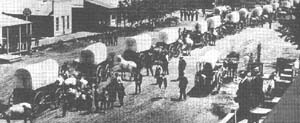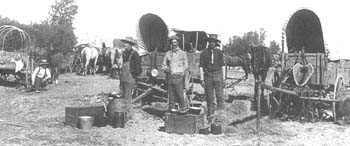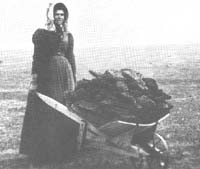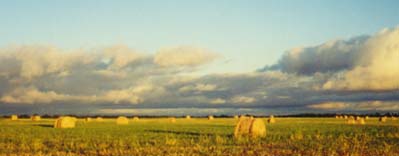|
|
|
 |

|
THE SUNFLOWER STATE FACTS AREA: 213,098 sq km (82,277 sq mi). Motto: Ad astra per aspera (To the stars through difficulties) |
One million years ago, the high plains of Kansas were the beds of a vast inland sea, which gave life to prehistoric forms now fossilized in Kansas limestone.
The first human inhabitants of Kansas were American Indians, the Plains Indians. Taos Indians built the northern-most pueblo in the Americas, El Cuartelejo, near Scott City. But the state was named after the Kansas River - named by the Kansa Indians camped along its banks. The name "Kansa" is a Sioux word meaning "people of the south wind."
Barely 50 years after Columbus landed in America, Spanish and French explorers journeyed to the area in search of gold and trade with the Indians. Spanish explorer and Conquistador Coronado came through Kansas in search of gold in 1541 and he noted that there were 25 Wichita villages, some of them numbering over 200 houses. In 1803, Kansas became part of the Louisiana Purchase, and the Santa Fe and Oregon trails opened soon after. Many early pioneers looked no farther than Kansas' fertile land.
 |
 |
 |
Kansas became the 34th state in the Union in 1861. The early settlers/pioneers didn't have it easy. Common were sod houses or dugouts, and because of the shortage of trees/wood for fuel, cow chips were gathered for cooking and heating fires. |
Just before the Civil War, the territory was known as "Bleeding Kansas" because of bloody battles between free-staters and pro-slavery forces. Border raiders (Quantrill) from Missouri burned the Free State Hotel in Lawrence, and abolitionist John Brown retaliated by killing five pro-slavery settlers near Pottawatomie Creek.
After the Civil War, railroads rolled into Kansas, making way for the great Texas longhorn cattle drives and the birth of the Wild West. Notorious "cowtowns" like Dodge City, Abilene, and Wichita thrived. Wild West legends like Bat Masterson, Wyatt Earp, and Wild Bill Hickok all tried to keep the peace. (See The Infamous)
The 1870s brought immigrants from many European countries and settlers from other states. In 1874, Mennonites from Russia brought Turkey Red wheat, a milestone that led to Kansas becoming a leading wheat producer in the country.
Source: Kansas State Historical Society
Further Link: Female Buffalo Soldier

|
Where We Critters Live
Kansas || Wichita
Kaws || Wichitas
|| Plains Indians
The Infamous || Tornado!
~~~~~~~~~~~~~~~~~~~~~
New Hampshire || Lake Winnipesaukee
The Abenaki || Alton Bay
Main
SiteGuide
Avian
Critter || Canine Critter
|| Human Critters
Beanie Critters || Wild
Critters
Interests & Hobbies & Links, Oh My!
~~~~~~~~~~~~~~~~~~~~~~~~~~~~~~~~~~~~~~~~~~
background by me
Papagei
Studios
__________________________________________________